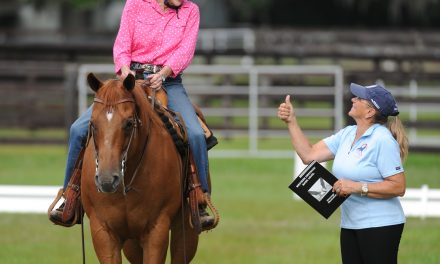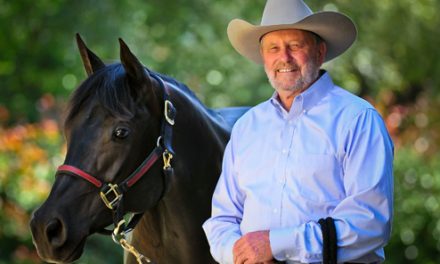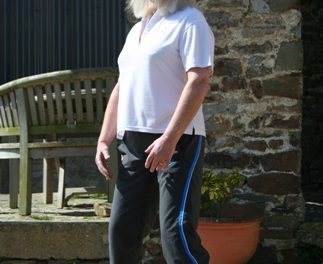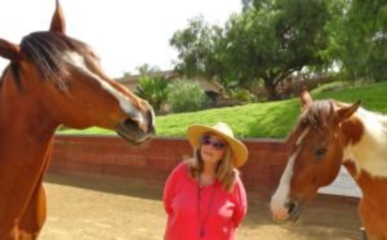Palm Partnership Training
Get Results You Can Use!
 In previous articles we have reviewed important steps to prepare for training on the trail, including reading the horse to recognize his inner energy level and working with him to release it. We have discussed preparing the rider through warm up and stretching exercises. Now we are ready to go out on the trail!
In previous articles we have reviewed important steps to prepare for training on the trail, including reading the horse to recognize his inner energy level and working with him to release it. We have discussed preparing the rider through warm up and stretching exercises. Now we are ready to go out on the trail!
Even when trail riding, a rider should have goals in mind for the time he or she will be spending with their horses. I believe 5 major goals should be included on every trail ride. They are:
1. Maintaining safety and confidence
2. Providing a fitness workout for the rider
3. Training the horse on the trail
4. Socializing with other riders and having fun
5. Managing pre- and post-trail ride logistics such as trailering, ponying, etc.
Maintaining safety and horse and rider confidence on the trail must be the first priority of these goals. Without these, the other trail riding goals cannot be achieved. Here are some general safety tips to help you and your horse have a safe, confidence-building experience on the trail.
If you have never been on the trail before… it is a good idea to scout out the trail a day ahead of your ride. Your first trip on the trail should be hiking it so you won’t have any surprises that you or your horse may not be ready to handle.
If you are inexperienced…do not go alone on any trail. Scout it out first. Then ask an experienced trail riding horse and rider team to go with you and your horse for at least the first ride on the trail. The third trip down the trail, you and your horse should have enough confidence to either go solo or feel comfortable with a group of riders coming along.
Remember to take a halter and longe line… keep the halter on underneath the bridle, and keep the longe line either hooked to the saddle where it can be safety carried or else stashed in a saddle bag. If you get into any situation on the trail where you are unsure of the horse’s reactions: get off, attached the longe line to the halter, and work the horse if he needs to get out his inner energy or nervousness.
Evaluate your last ride…before you go out on the trail. Was there anything you encountered during the previous trail ride that caused an issue? What goal do you want to achieve on this ride that will help solve that issue? Always have a plan in mind before setting off down the trail!
Unlike arena riding, most trails offer a variety of challenges for horse and rider. The varying terrain is great for conditioning the horse and adds interest to the ride. Here are some tips for handling common trail terrain challenges while maintaining safety and confidence.
Hills: Unlike arena riding, most trails have some up and downhill terrain. It is important to practice the correct position for riding uphill and downhill that will help you and your horse stay balanced.
When riding uphill, move your shoulders forward. This will help you stay centered over the horse’s center of gravity as he shifts it forward going uphill. Be careful not to let your legs swing back and out of position as you move the shoulders forward.
Going downhill is harder. Bring your shoulders back and your feet in front of the girth. Encourage the horse to keep his head up by bringing your hands straight up over the crest of his neck in time with his stride. If he increases his speed or pulls on the reins, he is balancing too much on his forehand. Make sure you are in the correct position and bring his head up to help him shift his balance off his forehand.
Obstacles: If you have scouted out the trail ahead of time, you know if obstacles such as water or ditches will be encountered. Evaluate the obstacle and decide if you can safely negotiate it. If you have to get off to cross an obstacle, dismount and negotiate the obstacle safely from the ground rather than trying to ride through it.
Strategies for leaving “home:”: “Home” when trail riding may be the barn if you are going for a ride from the horse’s stable, or it may be his trailer if you have driven to a trail. A horse’s instinct will always cause him to be more sluggish traveling away from home and more anxious when going back towards it. You will not be able to change this basic instinct, so plan how to use it to your advantage.
When leaving “home,” ask the horse for more forward movement. Ask him to travel at a jog to get him thinking forward. The outbound, away-from-home part of the trip is also the best time to practice maneuvers requiring the horse to stop and stand. When coming back toward “home” when he wants to be quick and anxious, ask him to do controlled, but slow, actions.
A note about trailering to a trail ride: If you or your horse are not familiar with trailering, give yourself plenty of time to practice this skill well before the trail ride date. Too often, riders think they can just “throw” a horse that is inexperienced into a trailer and drive off to meet their friends at the trail. This is a recipe for safety problems and loss of confidence for both horse and rider. Learn how to safely load, unload, and trailer your horse. I recommend my Longevity Training Video #2 – Advancing Basic Ground Training tape which includes a large segment on teaching a horse how to trailer and pointers for safely driving a trailer. When you know how to safely trailer a horse, access to many more trails and more fun will open to you.





